
All categories
Featured selections
Trade Assurance
Buyer Central
Help Center
Get the app
Become a supplier

(3016 products available)











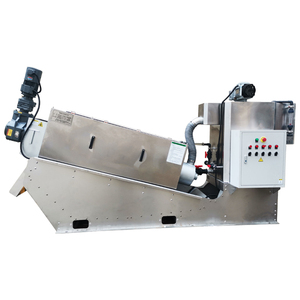





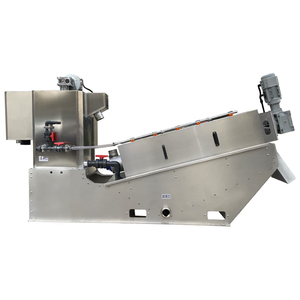


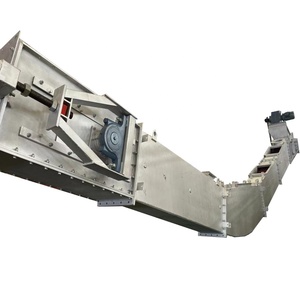


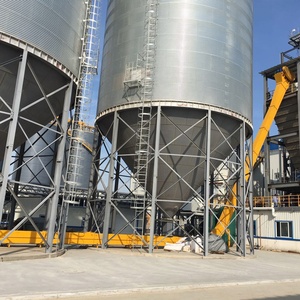









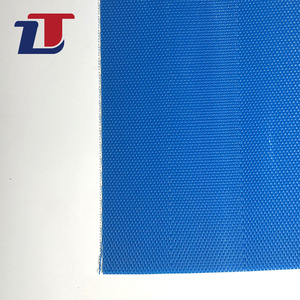
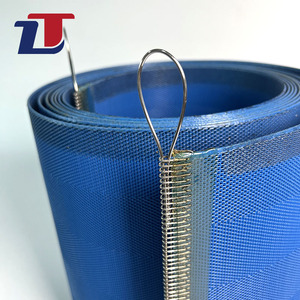



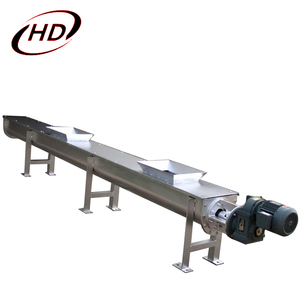


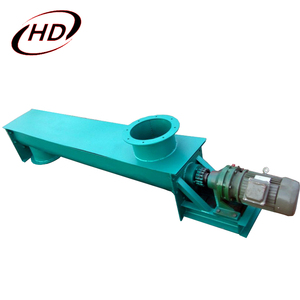

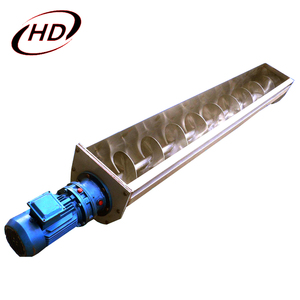
Sludge conveyor systems come in various types, each designed to handle specific types of sludge and operational requirements. Understanding these differences ensures the right choice for optimal performance.
Sludge Apron Apron Steel Belt Conveyor
Strong apron conveyors are the perfect choice to transport thick materials like stones, grains, or any mass clogging substances. They use robust steel plates and withstand large weights and high immediate temperatures. These conveyors are extremely resistant and, therefore, perfect for carrying tough materials over great distances in processing sectors, for construction, or for the transport of explosive materials in underground mining operations since they possess the least possibility of wear and tear or breaking down.
Sludge chain plate conveyor
The chain plate conveyor comprises steel materials and a steel chain of great thickness. It is distinct from the belt conveyor, as it can move large materials along a flat surface at a higher gradient. It provides a firm, rigid surface for transporting bulk material with sharp edges or hot products. Chain plate conveyors are common in food production, chemical plants, and metal processing factories where durable conveying systems are needed to transport heavy products and withstand harsh working conditions.
Sludge Z conveyor
The Z conveyor, called a bucket elevator or vertical conveyor, reclaims bulk materials through vertical space. It consists of buckets fixed to a belt or chain, which transports materials from one height to another. Z conveyors are extremely helpful where space makes it hard to move material or where the process requires the need to transport bulk material from a low skew to a high skew. They are often used in industries such as agriculture, mining, and chemical where accurate product transport at elevated or reduced levels is required.
Sludge Spiral Conveyor
The Spiral Conveyor is a type of conveyor system designed for three-dimensional space. Also known as helical conveyor systems, these conveyors move materials in a helical motion to occupy a lower, higher, or different plane in confined areas compared to a flat belt conveyor inclined/declined. They take up little space while delivering the bulk material quickly and smoothly. These are preferred choices in applications that require storage or frequent transport systems such as warehousing, distribution centers, and food and beverage bottling. That feature makes them an opportunity for dynamic sorting and buffering systems within a production line.
Sludge Belt Conveyor
The Sludge Belt Conveyor is the most common conveyor system used. Belt conveyors are the most common conveyor used and transport bulk materials over the surface of a moving belt. It is versatile, low in cost, and simple construction, usually associated with the transport of bulk materials such as coal, ores, agricultural products, packages in warehouses, and processing in the manufacturing industry. Certain designs are suitable for inclined or declined transport, covering a wide range of industries and moderate distances.
Robust Construction
Unlike other conveyors, sludge conveyors feature a special design to be extremely strong due to the nature of the materials they transport. Many have made stainless steel, heavy-duty belts, and reinforced structures to avoid the wear and tear of corrosive and abrasive masses. This strong design makes the machine last longer and operate under tough working conditions.
Efficient Sludge Handling
The conveyors are designed to move sludge and wastewater treatment byproducts as quickly and effectively as possible. Most designs reduce average transportation costs and increase operational efficiency by providing optimal load accommodation and minimum risk of material spillage.
Resistance to Corrosion
Strong resistance against corrosive elements is one of the features of sludge conveyors since it deals with chemical waste, wastewater, and other potentially corrosive materials. TThese conveyors are made with stainless steel or coated materials that protect against rust and corrosion, thus making them suitable for a long time even in very hostile environments.
Low Maintenance Requirements
Maintenance is low because of the nature of the design of the sludge conveyors, which incorporates high-quality components that are often easy to replace or repair. This reduces the time implicating the maintenance of the equipment and, thus, allows more production time.
Customization Options
Sludge conveyors, therefore, have different sizes, capacities, and configurations to ensure and, thus, accommodate any system's needs. For instance, angle of the conveyor, the width of the conveyor, the kind of driving force, etc., can be selected based on the unique requirements of the material to be conveyed and the layout of the facility. This flexibility gives rise to the efficiency of the given conveyor system in each industry with regard to transportation.
Load Capacity
One of the most important factors in choosing a conveyor belt is the load it can carry. The conveyor should be able to carry the maximum weight of the materials to be conveyed without losing its strength. Some belt conveyors have very low load capacities, while others are designed for heavy loads. Ensure the conveyor system you choose meets your needs regarding load capacity.
Sludge type
Different types of conveyors are best designed for different types of sludge, such as dry, wet, thick, or thin. For instance, a screw conveyor is good for thick or dry sludge because of its ability to move dense materials. At the same time, a belt conveyor might be better for thin or fluid types of materials. Identify the kind of material to be conveyed and choose an appropriate conveyor accordingly.
Distance and layout
This consideration involves the distance that needs to be covered by the conveyor and the layout of the space. Incline and decline, horizontal and vertical lengths, and the configuration of the route should be factored into the conveyor design. Longer distances may require sophisticated systems to pull through, such as pneumatic or roller bed belt conveyors. In contrast, short units can be operated with simpler and less expensive machines, such as screw conveyors. Check the conveyor design to ensure that it suits your operational area.
Environmental conditions
Other factors include the surrounding conditions where the conveyor will be operating. If the environment is very moist or hot, it's possible to have corrosion-resistant materials like stainless steel and weatherproof casings. If there are extreme temperatures, it will affect the conveyor system's components, making it wear faster. Ensure the conveyor is strong enough to withstand environmental conditions and keep it functioning properly for a long time.
Cost and budget
Both initial and operational costs need to be considered when choosing a conveyor. The initial cost refers to the amount of money to put in the installation, while the operational cost relates to the costs of energy, maintenance, and repairs. While some may be expensive initial costs due to their sophisticated technology, others may be cheaper in the long run because of low energy requirements and maintenance. Ensure that the budget considers all the costs related to conveyor ownership before purchase.
Installation
This process requires the setup of a conveyor system at the workplace. This includes the alignment of the belt, setting the motor, and mounting the frame. Feed and discharge points are set properly so the conveyor is optimal. Before running the conveyor, make sure all parts are fixed to prevent the belt from snapping or the motor burning out.
Loading Sludge Properly
A conveyor should have a proper load, which means that the materials to be carried should be spread over the entire width of the belt at the loading point. The excessive load in one place causes a system jam or damage. Use feed hoppers or spreaders to ensure that the sludge is evenly distributed as required by the conveyor system.
Monitoring Operations
It is important to frequently check the gear of the conveyor while running to be sure it is operating smoothly. Watch out for any signs of leaks, strange noises, and belt wear. This helps in early detection of problems and allows for repair before system failure. Check the drive and pulleys to ensure they are clean from sludge because they influence the effectiveness of transportation.
Maintenance Schedule
Maintenance schedules are important for keeping the conveyor running longer. Some of them include lubricating the chains or the belting, checking out for wear and tear, checking the motor, and changing filters, among others. Follow the maintenance procedures given by the manufacturer to ensure that the conveyor operates with minimum downtime. This form of maintenance increases the life span of the conveyor and, therefore, the efficiency of its performance.
Safety Precautions
While using the conveyor, it is important to follow safety regulations. Make sure that emergency stops are fully operational. All guards and shields should be fixed in the right position to avoid accidents. Operating staff should know how to run the machine and turn off the machine when accidents occur. This helps reduce operating risks and ensures a safe working environment.
A1: A conveyor belt system meant for transporting semi-solid waste materials called sludge in industries like wastewater treatment, food processing, and mining.
A2: Conveyors can carry various sludges, including industrial waste, sewage, chemical residues, and biological materials found in food and beverage processing.
A3: Unlike regular conveyors, which handle dry or solid materials, sludge conveyors are specially designed to transport viscous or wet materials, often with additional features to prevent sticking and overflowing.
A4: Common features include durable, corrosion-resistant materials, scraper or flush cleaning systems, enclosures to control spillage, and optimized inclines for efficient transport without blockages.
A5: Maintenance involves regular inspections for wear, cleaning to prevent blockages, lubrication of moving parts, checks for belt tension alignment, and prompt repairs of any damage.
A6: Yes, Sludge Conveyor can be customized in size, capacity, and material based on specific industry requirements.